Filtrer par
9
résultats
Rappel de recherche : Lieu : La Nouvelle-Orléans
Modifier les filtres
Exporter les résultats sélectionnés
Sélectionner tous les résultats de la page
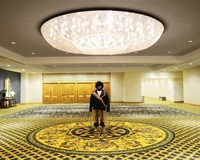
-
Notice détaillée
Titre : Bobby Williams wearing blackface in the Hall of the Hotel Hilton, Zulu Social Aid & Pleasure Club New Orleans.Auteur : Lo Calzo, Nicola (1979-....)Lieu de la prise de vue : La Nouvelle-OrléansExtrait de : Cham, la mémoire vivanteType : Photographie - CouleurConditions d'utilisation : CC-BY-NC-ND - Attribution - Pas d'utilisation commerciale - Pas de modificationProvenance : Université des Antilles


-
Notice détaillée
Titre : David Ducros, rap singer, during the filming of his first clip «One Mic». TreméAuteur : Lo Calzo, Nicola (1979-....)Lieu de la prise de vue : La Nouvelle-OrléansExtrait de : Cham, la mémoire vivanteType : Photographie - CouleurDescription : I Was born November 15,1993. My stage name is Big David; I’ am American rapper from New Orleans, Louisiana. Throughout my early childhood, I was a witness to the many lives that were lost and victimized by the streets. My life changed July 20.2002 after witnessing the death of my mother. I began rapping as a way to cope with the passing of my mother. By the time I was 16 I had began to work on my first mixtape as well as recording and mixing my own music. On September 24, 2010 officers acting in the undercover capacity attempted to detain me in an unlawful fashion after I struck a plain-clothes officer. I was brutally kicked and beat by as many as 3 or 4 officers. After being struck in the head with a gun, which lacerated the top of my head I was handcuffed and stomped in the head while in handcuffs. Doctors concluded that I suffered a concussion as a result of the brutal assault. After many court dates and trials I was adjudicated for resisting arrest and assaulting an officer despite the fact that I was the one who was assaulted due to the cops suspicion of me distributing narcotics. Narcotics were never found. I received 6 months of probation. I want to disseminate the injustices of my community. I have faced many impediments and have come to discern that in this day and age an oppression of our people is very much prevalent. We have been oppressed for so long that bigotry has become deeply ingrained into our minds and we remain ignorant to knowledge. Throughout my life I have remained strong allowing me to endure without despondence. Many of us cannot acknowledge the obstructions that are the foundation of an oppression but as I have said in my song Nas 1 Mic Remix, «I swear to God dope money got brothaz riding round in a member see we at war and the hood is hiroshima see they got bombs that they dropping on un but these brothaz dont’ see it yea they plotting on us cant’ put us in chains so they put us in cuffs in these underdeveloped neighborhoods brotaz call a jungle the government dont’ care about us we living a struggle». David DucrosConditions d'utilisation : CC-BY-NC-ND - Attribution - Pas d'utilisation commerciale - Pas de modificationProvenance : Université des Antilles

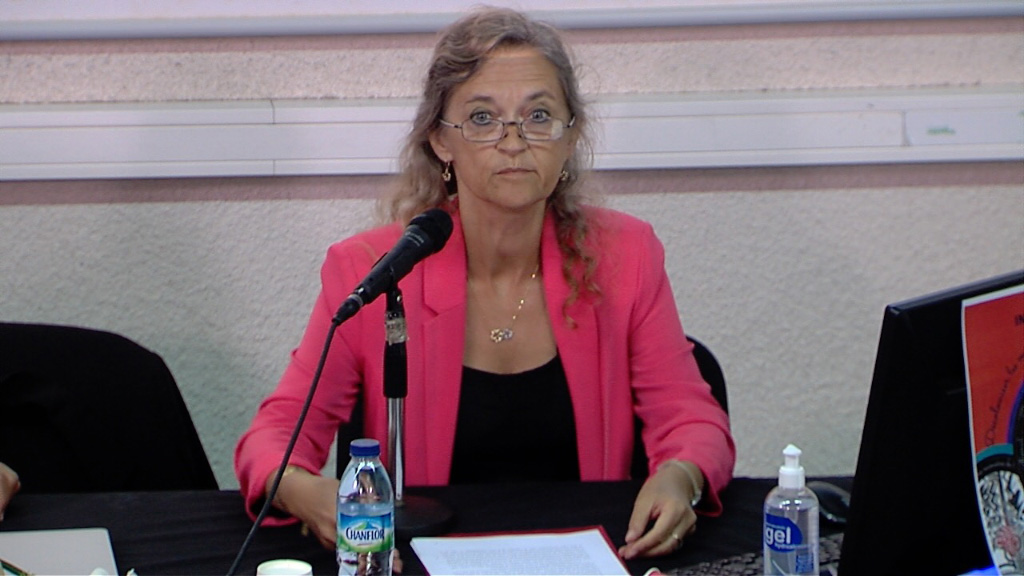
-
Notice détaillée
Titre : Décoloniser les mémoires de l'esclavage à La Nouvelle-Orléans : anatomie d'un palimpseste à visée radicaleIntervenant principal : Dessens, Nathalie (1963-....)Intervenant secondaire : Le Glaunec, Jean-Pierre (1977-....)Edition : Laboratoire caribéen de sciences socialesLieu : SchœlcherDate : 10 juin 2022Extrait de : Décoloniser les mémoires de l'esclavageType : Vidéo - Colloque & conférenceLangue : françaisMots-clés : Esclavage - Parchemin - Histoire - La Nouvelle-Orléans - États Unis - 20e siècle - 21e siècleConditions d'utilisation : CC-BY-NC-ND - Attribution - Pas d'utilisation commerciale - Pas de modificationProvenance : Université des Antilles

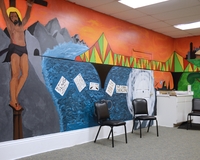
-
Notice détaillée
Titre : Graffiti with the Black Christ and the African American history, Youth Ministry Room, St. Peter Vlaver Ricardo, Members of the Buffalo Soldiers, Claiborne Avenue, Tremé Church, Tremé, New Orleans.Auteur : Lo Calzo, Nicola (1979-....)Lieu de la prise de vue : La Nouvelle-OrléansExtrait de : Cham, la mémoire vivanteType : Photographie - CouleurConditions d'utilisation : CC-BY-NC-ND - Attribution - Pas d'utilisation commerciale - Pas de modificationProvenance : Université des Antilles

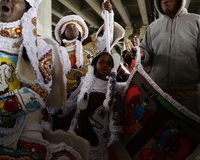
-
Notice détaillée
Titre : Mardi Gras Indians on Claiborne Avenue, Tremé.Auteur : Lo Calzo, Nicola (1979-....)Lieu de la prise de vue : La Nouvelle-OrléansExtrait de : Cham, la mémoire vivanteType : Photographie - CouleurConditions d'utilisation : CC-BY-NC-ND - Attribution - Pas d'utilisation commerciale - Pas de modificationProvenance : Université des Antilles

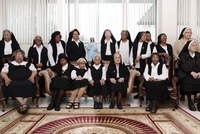
-
Notice détaillée
Titre : Mass, «The Sisters of the Holy family» convent, New Orleans.Auteur : Lo Calzo, Nicola (1979-....)Lieu de la prise de vue : La Nouvelle-OrléansExtrait de : Cham, la mémoire vivanteType : Photographie - CouleurDescription : The Sisters of the Holy Family, founded in New Orleans in 1842, were the first African American Catholics to serve as missionaries. Twenty years before the Civil War of the United States, and before it was legal for a Black Congregation to exist, the Sisters of the Holy Family were founded in New Orleans, Louisiana by Henriette Delille, a free woman of color. Their religious identity did not prevent the discriminations associated with their racial identity. Even permission to wear the habit that would mark their religious identity was delayed for over thirty years after their founding. The Sisters of the Holy Family remain active today, with over 200 members by operating free schools for children, nursing homes, and retirement homes in New Orleans, in US,and the Central American country of Belize. Our community had to fight to arrive here...It has always been a challenge. Even today we still go through an experience, a time where we have to consider racism, we have to work very hard to get some opportunities. In many cases it’s because of racism. The fight continues. The reason for what we fight is for the people we serve, you can see that there are some injustices and we are here to promote justice. Sister Greta Jupiter Vice-Congregational Leader.Conditions d'utilisation : CC-BY-NC-ND - Attribution - Pas d'utilisation commerciale - Pas de modificationProvenance : Université des Antilles

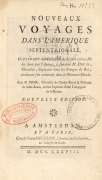
-
Notice détaillée
Titre : Nouveaux voyages dans l'Amérique Septentrionale, contenant une collection de lettres écrites sur les lieux, par l'auteur, à son ami. M. Douin, ci-devant son camarade dans le Nouveau MondeAuteur : Bossu, Jean-Bernard (1720-1792)Edition : chez la Vve Duchesne, LibrairieLieu : AmsterdamDate : 1778Type : Livre - Lettre, Récit de voyageLangue : FrançaisMots-clés : Voyage d'exploration - Géographie - Haïti - Hispaniola - La Nouvelle-Orléans - Louisiane - États Unis - 18e siècleConditions d'utilisation : Domaine public

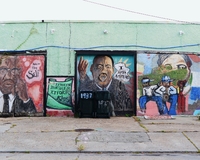
-
Notice détaillée
Titre : «I have a dream», Graffiti in N Prieur Street, Faubourg Tremé, New Orleans, Louisiana According to New Orleans’s official tourist agency.Auteur : Lo Calzo, Nicola (1979-....)Lieu de la prise de vue : La Nouvelle-OrléansExtrait de : Cham, la mémoire vivanteType : Photographie - CouleurDescription : «The Faubourg Tremé or as it is more frequently referred to, Tremé, is not only America’s oldest black neighborhood but was the site of significant economic, cultural, political, social and legal events that have literally shaped the course of events in Black America for the past two centuries. Yet, few outside of New Orleans except for scholars and historians know its enourmous importance to Americans of African descent ». The neighborhood has at least three dominant positive identities : as a place of unique African American cultural performance traditions ; as a place of significant African American political achievement and as a place of historic architecture. Tremé is a neighborhood of colorful parades and funerals. It a place of secondlines parades, DJs, jazz music and jazz funerals, corner bars and black Mardi Gras. Tremé is also noted for the radical political activism carried out by its Creole of Color residents in the nineteenth century. Though they may be enjoyable for both partecipants and spectators, these traditions do not exist simply to entertain. They also serve as the basis for community building and political resistence. As Stephan Nathan Haymes writes, «Within the black urban communities place making and therefore the production of public spaces is linked with day-to-day survival. But it is within the realm of day-to-day life, of daily survival, that black urban communities create public spaces that allow them to develop self-definition or social identities that are linked to a politics of resistance. Over the past forty years, Tremé’s longterm black community has chosen to fight for its culture. Michael E. Crutcher JR.Conditions d'utilisation : CC-BY-NC-ND - Attribution - Pas d'utilisation commerciale - Pas de modificationProvenance : Université des Antilles

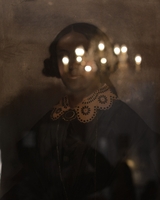
-
Notice détaillée
Titre : «Portrait of Lady» presumed to be a free woman of color, dated 1857, Le Musée de free people of color, New Orleans.Auteur : Lo Calzo, Nicola (1979-....)Lieu de la prise de vue : La Nouvelle-OrléansExtrait de : Cham, la mémoire vivanteType : Photographie - CouleurConditions d'utilisation : CC-BY-NC-ND - Attribution - Pas d'utilisation commerciale - Pas de modificationProvenance : Université des Antilles

Save search
Recherche
25366 documents en libre accès